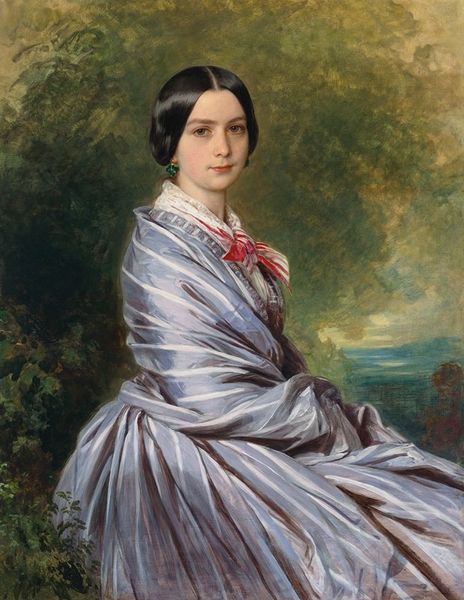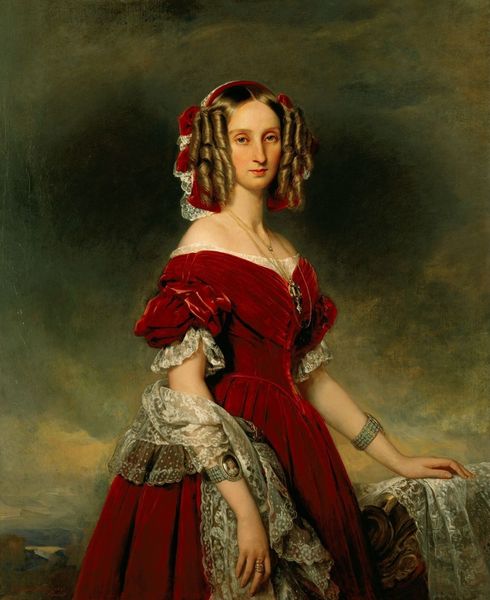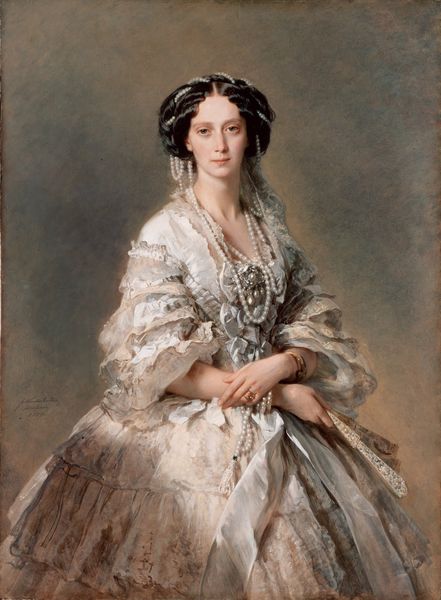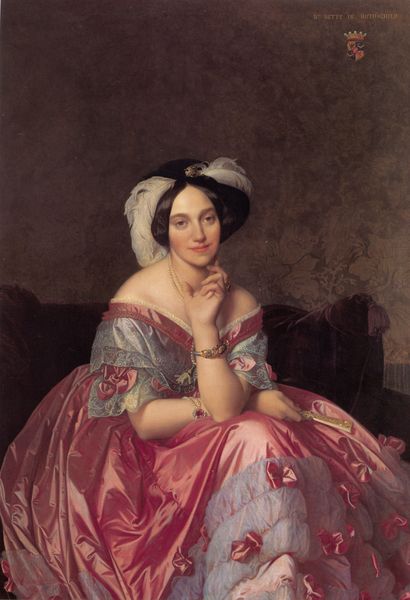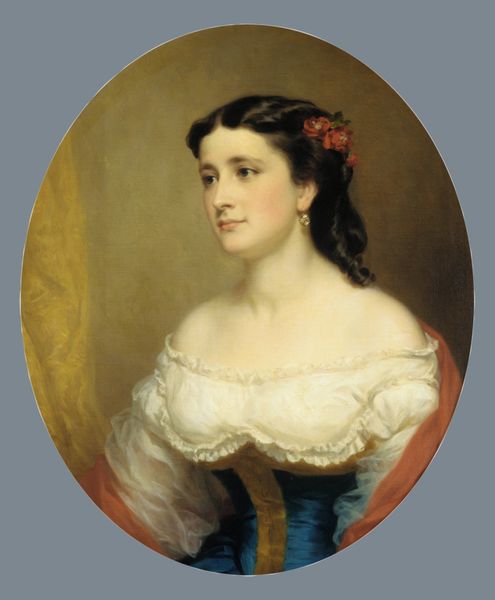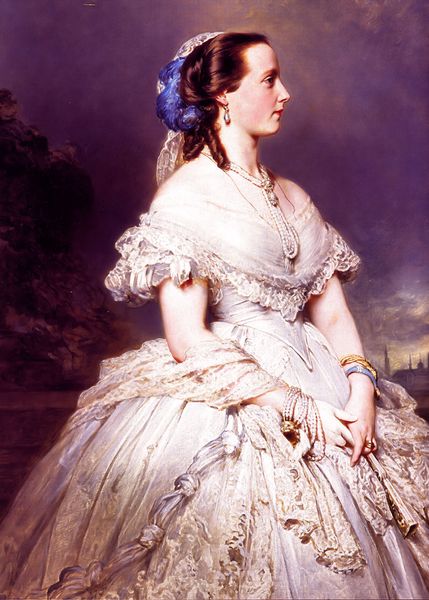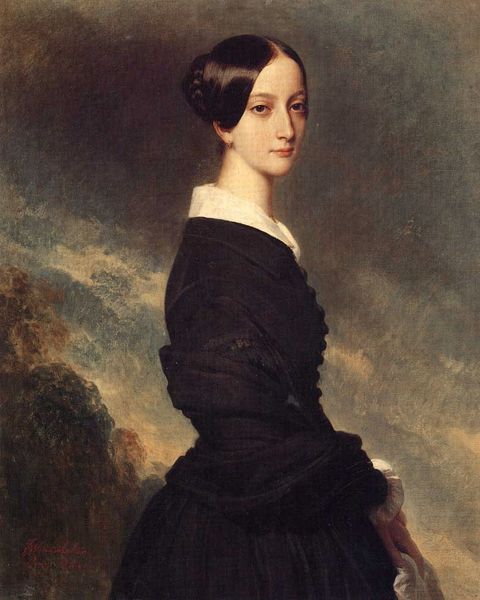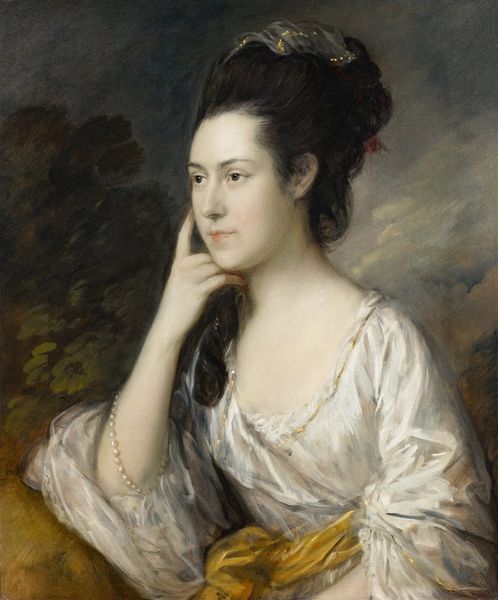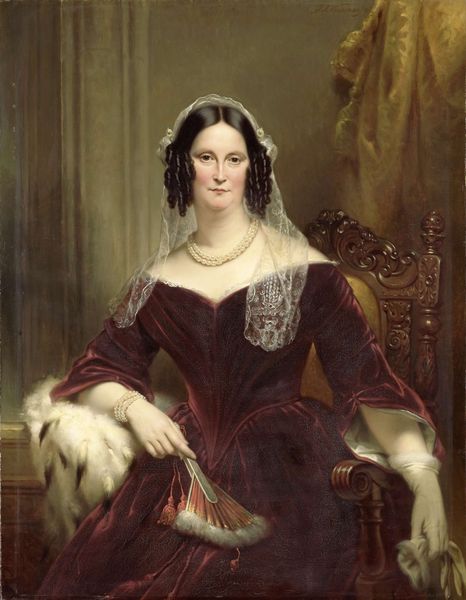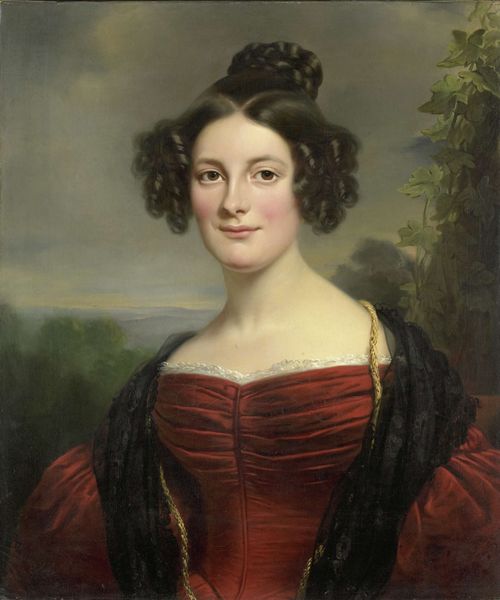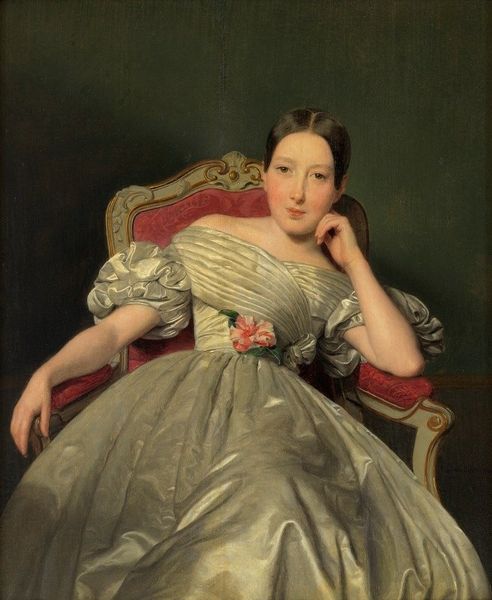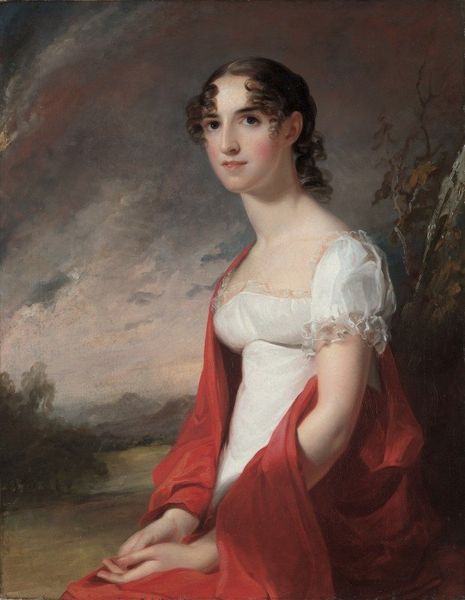
Portrait of Grand Duchess Maria Nikolayevna 1857
0:00
0:00
Dimensions: 128 x 97 cm
Copyright: Public domain
Curator: This is Franz Xaver Winterhalter's oil on canvas "Portrait of Grand Duchess Maria Nikolayevna", painted in 1857. It’s currently held at the Hermitage Museum. Editor: Wow, it has a melancholic air, don’t you think? It’s as though the Grand Duchess is peering at us through time itself. The landscape in the background looks like a dream. Curator: Winterhalter was renowned for capturing the likenesses of European royalty. His portraits offer insight into the sartorial and social norms of the elite. Maria Nikolayevna, daughter of Tsar Nicholas I, was known for her patronage of the arts, and this portrait likely served to solidify her position within the Imperial court. Editor: And those details! The lace shawl... It feels so real, like you could reach out and touch it, but there is such restraint in her pose and a hint of sadness, like she's a raven caught in gilded cage. It makes me wonder, did she feel like she had any real control over her destiny? Curator: The Romantic era had a huge emphasis on emotions, and on portraying them realistically, of course, within the context of courtly portraiture. There's certainly a romantic sensibility at play. Though some historians debate the extent to which Winterhalter’s portrayals flattered his sitters, here there’s an undeniable dignity, tempered by a subtle vulnerability, perhaps that’s the effect you’re picking up on. The fan seems to denote how grand duchesses communicated behind a facade. Editor: Precisely, there's a whole world there simmering beneath the surface. Maybe I am reading too much into the face of a noblewoman I never knew but what a stunning composition by Winterhalter, who gave her something special. It’s as if her eyes are reflecting back the landscapes within her mind and also the viewers that came before and those yet to gaze on her countenance. I think it's a compelling picture. Curator: Winterhalter succeeded in producing an image that not only conveyed status but also hinted at an inner life, appealing, perhaps, to viewers beyond its original context. His pictures serve a political purpose but also capture something human. It helps us understand both the institution of Monarchy and the lives of its participants in nineteenth century Russia. Editor: Absolutely. I think that lingering duality between public persona and the quiet yearning of a soul adds so much richness and it makes the portrait haunting. Curator: An intriguing dialogue we've had today. It brings an important perspective when thinking of historical representations, where political symbolism merges with artistic expression.
Comments
No comments
Be the first to comment and join the conversation on the ultimate creative platform.
